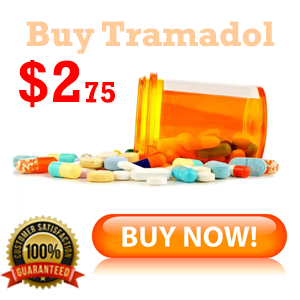
Tramadol (Ultram): Complete Guide to Effective Pain Relief
Since its FDA approval in 1995 and reclassification as a Schedule IV narcotic in 2014, tramadol has become a cornerstone therapy for moderate to moderately severe pain when traditional non-opioid analgesics fail. Marketed under brand names such as Ultram®, Conzip®, and Ryzolt®, this versatile medication offers dual pain-relief pathways combined with a relatively lower abuse potential compared to stronger opioids.
How Tramadol Works: Dual Mechanisms for Superior Analgesia
Tramadol's unique efficacy stems from:
- �-Opioid Receptor Agonism: It binds centrally to �-opioid receptors, dampening ascending pain signals in the spinal cord and brain.
- Monoamine Reuptake Inhibition: It weakly blocks reuptake of serotonin and norepinephrine, enhancing the descending inhibitory pathways that further suppress nociception.
These complementary actions address both nociceptive (surgical, inflammatory) and certain neuropathic pain states, making tramadol an adaptable choice for chronic and acute pain management.
Formulations & Brand Variants
Tramadol is available in multiple oral forms:
- Immediate-Release (IR): 50 mg tablets or capsules for as-needed pain relief.
- Extended-Release (ER): 100 mg, 200 mg, 300 mg tablets delivering continuous 24-hour analgesia.
Common brand names include Ultram®, Ryzolt®, Conzip®, Bestodol®, and Tramacon®, as well as numerous generic equivalents.
Indications: When to Prescribe Tramadol
FDA-approved: Management of moderate to moderately severe acute and chronic pain when alternative treatments are inadequate.
Extended-Release Use: Indicated for patients requiring around-the-clock pain control, such as those with osteoarthritis or chronic back pain.
Off-label Considerations: Under physician guidance, tramadol may benefit restless leg syndrome, refractory diabetic neuropathy, or as adjunctive therapy in fibromyalgia.
Dosing Strategies: IR vs. ER
Immediate-Release (IR)
- Initial dose: 25 mg every 4�6 hours as needed
- Titrate gradually based on pain severity and tolerance
- Maximum daily dose: 300 mg
Extended-Release (ER)
- Once-daily dosing determined by total 24-hour IR requirement
- Swallow tablets whole-do not crush, chew, or split ER formulations
- Adjust downward in elderly or patients with renal/hepatic impairment
Always start at the lowest effective dose and adjust in small increments under close supervision.
Essential Safety Warnings & Contraindications
- Hypersensitivity: Contraindicated in patients allergic to tramadol, other opioids, or formulation excipients.
- Seizure Risk: Use with extreme caution in those with epilepsy, head trauma, or on serotonergic antidepressants (SSRIs, MAOIs, TCAs).
- Respiratory Depression: Avoid in severe asthma or respiratory insufficiency without resuscitative support.
- GI Obstruction: Risk of paralytic ileus precludes use.
- Pediatric Restrictions: Not for children <12 years; avoid in adolescents post-tonsillectomy/adenoidectomy.
- MAO Inhibitors: Do not administer within 14 days of MAOI therapy due to serotonin syndrome risk.
Drug Interactions to Monitor
- CNS Depressants: Combining with alcohol, benzodiazepines, barbiturates heightens sedation and respiratory depression risk.
- Serotonergic Agents: SSRIs, SNRIs, triptans-monitor for serotonin syndrome.
- Enzyme Modulators: Carbamazepine, quinidine (? tramadol levels); rifampin, phenytoin (? levels).
- Anticoagulants & Cardiac Drugs: Warfarin, digoxin-close monitoring of therapeutic levels advised.
Managing Adverse Effects & Withdrawal
Common Side Effects
- Dizziness, somnolence, headache
- Nausea, constipation, dry mouth
- Sweating, pruritus
Serious Risks
- Seizures, serotonin syndrome
- Respiratory depression
- Anaphylaxis, severe skin reactions
Withdrawal symptoms (anxiety, insomnia, tremor) may occur with abrupt discontinuation-taper doses slowly over at least one week.
Best Practices & Patient Education
- Use the lowest effective dose for the shortest duration necessary.
- Combine pharmacotherapy with non-drug approaches: physical therapy, cognitive behavioral therapy, lifestyle changes.
- Educate patients on proper administration-especially preserving ER tablet integrity and timing doses with meals if needed.
- Schedule regular follow-ups to assess pain control, functional status, and potential misuse.
Conclusion
Tramadol (Ultram) offers a balanced approach to moderate to severe pain management by engaging opioid receptors and modulating monoamine pathways. When prescribed thoughtfully-adhering to dosing guidelines, monitoring interactions, and integrating non-pharmacologic strategies-tramadol can provide significant relief with a favorable safety profile. Always consult your healthcare provider to determine the optimal treatment plan tailored to your needs.